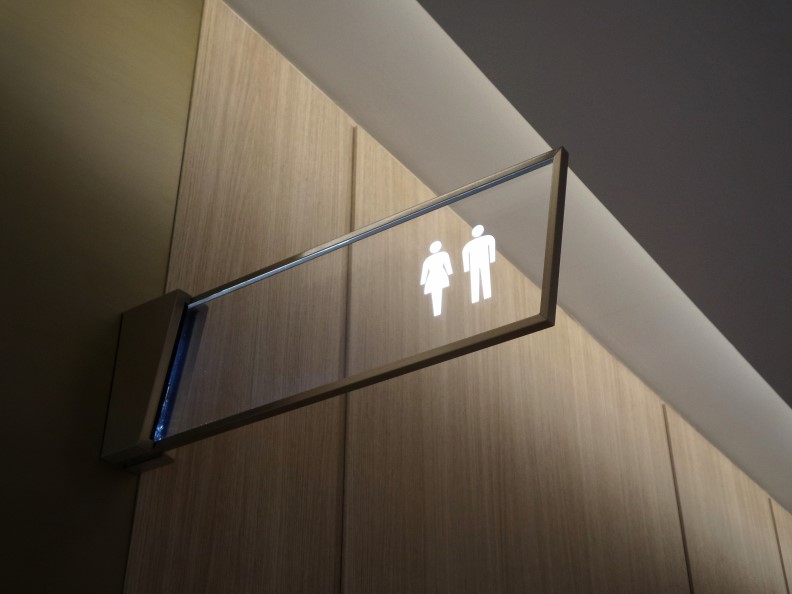Formaldehyde is a volatile organic compound (VOC) whose molecules are composed of one carbon atom, one oxygen atom and two hydrogen atoms - its chemical formula is CH2O. It is a colorless gas at room temperature, but can be detected due to its pungent smell and suffocating effect. In general, formaldehyde is produced when hydrocarbons undergo oxidation or incomplete combustion, and is also flammable itself. Explosion risk due to formaldehyde is not normally an issue in residential and commercial settings, but the substance must be handled with care when stored in containers for industrial applications.
Formaldehyde is soluble in water and is used for many purposes in laboratories, mostly as a disinfectant and to preserve biological samples. It is also used in many industrial processes, especially when manufacturing resins, textiles or wood products. Formaldehyde has also been used as a fungicide, insecticide and microbiocide, but many countries have banned it for those purposes due to its effects on human health, which will be covered in this article.
Formaldehyde is also known as formol, methanal or oxomethane. In aqueous solution it is called formalin, and it is corrosive and flammable. The sources of formaldehyde are both natural and artificial:
- It is produced in small amounts by the metabolic processes of living organisms, including humans.
- Some of the most common artificial sources of formaldehyde are cigarette smoke and vehicle exhaust, and it is also emitted by processed wood, paper products, synthetic fabrics, cleaning products, paints, adhesives and cosmetics. New electronic devices may also emit it.
What are the Effects of Formaldehyde?
Formaldehyde is useful in laboratories and industrial processes, but brings a wide range of negative effects when its concentration is not controlled, especially in indoor spaces. The US Food and Drug Administration (FDA) classifies formaldehyde as an allergen: small concentrations irritate the eyes, mouth, throat and respiratory system; and higher concentrations can cause inflammation of the larynx and lungs, a potentially life-threatening reaction.
The effects of formaldehyde are more severe when it is inhaled or ingested, and it can irritate the eyes with direct contact. The substance can also be absorbed through the skin, but at a much lower rate, so the risk of adverse reactions is less significant and has not been studied in detail.
What Formaldehyde Concentration is Considered Acceptable?
According to the US Agency for Toxic Substances and Disease Registry, the normal formaldehyde concentration in the air is 0.0002-0.006 ppm in rural and suburban settings, increasing to 0.001-0.02 ppm for outdoor air in urban settings, and 0.02-4 ppm for interior spaces. Of all indoor locations, the highest levels of formaldehyde are typically found in the resins industry.
Formaldehyde concentrations are normally expressed in parts per million, or ppm. They may also be found in ppb, or parts per billion, which can easily be worked out from ppm concentrations by multiplying the latter by 1000. Sometimes you may find formaldehyde concentrations in mg/L which is an equivalent of ppm as per the following rule.
One thousanth of a gram is one milligram and 1000 ml is one liter, so that 1 ppm = 1 mg per liter = mg/Liter. PPM is derived from the fact that the density of water is taken as 1kg/L = 1,000,000 mg/L, and 1mg/L is 1mg/1,000,000 mg or one part in one million (ppm).
Since formaldehyde dissolves easily in water, the US Environmental Protection Agency has established maximum concentrations that are considered acceptable in drinking water:
- 10 mg/L for one day
- 5 mg/L for 10 days
- 1 mg/L for average lifetime exposure
With respect to work environments, the Occupational Safety and Health Administration requires formaldehyde levels to be kept below 0.75 ppm, assuming an 8-hour workday and 40-hour workweek. For the general public, the exposure limit is reduced to 10% (0.075 ppm), given the presence of children, pregnant women, elders and individuals with health conditions.
The World Health Organization establishes a similar guideline, recommending that formaldehyde concentration in the air be kept under 0.08 ppm or 0.1 mg/m3 for a 30-minute exposure. This threshold prevents sensory irritation for most people.
Three Ways to Test Formaldehyde’s Presence and Concentration
The US Environmental Protection Agency has a compendium of indoor air testing methods that target key pollutants, and in the case of formaldehyde there are three proposed methods:
- Solid Adsorbent Cartridge (Method IP-6A)
- Continuous Colorimetric Analyzer (Method IP-6B)
- Passive Sampling Device (Method IP-6C)
Continuous Monitoring of Formaldehyde Concentration
The methods outlined above can be used to determine formaldehyde concentration with precision, but are impractical for continuous monitoring purposes. The main limitation when monitoring VOCs is that there are thousands of them in addition to formaldehyde, and the cost of using a dedicated sensor for each major VOC would be prohibitive.
There is a wide range of devices, some cheap and others very expensive, that claim to measure accurately formaldehyde. Most of them get false positives all the time. A common example are the so called "formaldehyde meters" that trigger an alert with just alcohols.
A more acceptable approach is to monitor total VOC concentration (TVOC) with a single device, and many countries have followed that approach when developing their standards, including Australia, Finland, Germany, Hong Kong and Japan. TVOC levels in the range of 0.6 to 1.0 mg/m3 are considered acceptable. The German Health Department has also developed a table with recommended measures and exposure limits according to different TVOC ranges in parts per billion:
Level | tVOC | Exposure Limit | Recommendations | |||||
|
|
|
| |||||
|
|
|
| |||||
|
|
|
| |||||
|
| None |
| |||||
|
| None |
|
How Can Formaldehyde Concentration be Controlled?
The US Environmental Protection Agency provides several recommended measures to reduce formaldehyde concentration in indoor air:
- Since the typical formaldehyde concentration is much higher indoors, a simple and effective measure is to have adequate ventilation. If indoor air is constantly renewed with a supply of fresh outdoor air, formaldehyde concentration simply does not have a chance to build up.
- Many office products and furniture emit formaldehyde naturally, but the rate is accelerated with higher temperature. Therefore, air conditioning also contributes to keeping its concentration low.
- High air humidity also accelerates formaldehyde emission. Ideally, the air conditioning system should control both humidity and temperature, but an air dehumidifier can be used if the AC system by itself is not enough. Humidity control also has the advantage of mitigating air pollutants of biological origin, especially mold and dust mites.

3 plants that improve indoor air quality: Areca Palm, Mother-in-Law’s Tongue and Money Plant.
There are also many plants that filter out formaldehyde from the air, and there is research by NASA that validates this fact. Space crews can't "renew" the air, because there's no air in the space, so all they can do is "recycle" poor air into good air. Plants are very good at doing just that.
The following plants are highly recommended to reduce the formaldehyde content in indoor spaces:
- Dwarf Date Palm
- Boston Fern
- Kimberley Queen Fern
- Spider Plant
- Chinese Evergreen
- Bamboo Palm
- Weeping Fig
- Devil’s Ivy
- Flamingo Lily
- Broadleaf Lady Palm
- Barberton Daisy
- Cornstalk Dracaena
- Varigated Snake Plant
- Red-Edged Dracaena
- Peace Lily
- Florist’s Chrysanthemum
**Updated November 2019.
The decades-old claims about the power of plants to improve indoor air quality might be totally wrong, according to a recent study by the Drexel University. Researchers say that the experiments conducted in previous studies were done in lab-controlled environments.
According to their findings, in the real world, hundreds of plants would be required in a single room to come close to the air-cleaning capacity of just one air purifier.
Although we should be cautious about the findings of this study, it casts reasonable doubts on a generalized belief, and opens up a new and interesting perspective on this topic.
How Can You Limit Formaldehyde Emissions in Your Office?
A properly designed HVAC system helps keep formaldehyde levels low, but even better results can be obtained if emissions are minimized in the first place. The main sources of formaldehyde in indoor locations are wood furniture, combustion appliances, cleaning products and cosmetics.
Formaldehyde from Wood Products
In spite of its negative effects on human health, formaldehyde is a very important input in the manufacturing process of many adhesives and resins, and these in turn have plenty of applications in the manufacture of wood products. Once these products reach homes and commercial locations, they start to emit formaldehyde - the highest release occurs when they are new, and then it decreases over time.
There is currently no other chemical compound that can take over the role of formaldehyde in wood furniture manufacturing, so industry associations have been formed to regulate emissions (off-gasing). Before purchasing wood products, make sure they meet the regulations locally applicable:
- The US Department of Housing and Urban Development has established the following limits: 0.2 ppm for plywood, 0.3 ppm for particleboard, and in general a maximum of 0.4 ppm for ambient air. Hardwood plywood products are regulated by the ANSI/HPVA HP-1-2016 standard, particleboard products are regulated by ANSI A208.1-2016, and medium-density fiberboard products are regulated by ANSI A208.2-2016.
- The applicable European standards was EN 120, but it was recently superseded by the EN ISO 12460:2015 standard. The E1 classification indicates a formaldehyde content no greater than 8 mg/100 g, while the E2 classification means the product contains more than 8 mg/100 g and up to 30 mg/100 g.
- Japan introduced its JIS A 1460:2015 standard for formaldehyde emissions from wood products. The requirements for a wood product to get a 4-star rating under this standard are the most stringent in the world - the average formaldehyde emission level must be below 0.30 mg/L.

Most plywood, and other kinds of compressed wood, contain formaldehyde.
Formaldehyde from Combustion Appliances
Unvented combustion is another significant source of formaldehyde in indoor settings, and this includes scented candles and cigarettes (even electronic cigarettes!). Other sources of formaldehyde include portable kerosene space heaters, fireplaces and gas-fired ranges without a hood. Vehicle exhaust is also a key source of formaldehyde, so you should make sure the garage is properly vented.
Cleaning Products and Fragrances
One of the main issues with volatile organic compounds like formaldehyde is that the products containing them do not always smell bad, and may even have a pleasant smell. In general, spray-based and plug-in air fresheners release formaldehyde as well as all cleaning products containing organic compounds classified as terpenes.
If you want indoor spaces to smell better, consider aromatic plants to achieve the same effect naturally. Besides, plants bring a wide range of additional benefits, which include filtering out formaldehyde and many other harmful compounds from indoor spaces.
Cosmetics
Cosmetics are yet another example of how a good-smelling product can release harmful compounds like formaldehyde. However, many countries have introduced regulations to control formaldehyde in cosmetics - some limit the allowable content, and some have banned it completely.
- In Japan and Sweden, cosmetic products containing formaldehyde are banned.
- The European Union places limits on formaldehyde in cosmetics, and when a product contains it it must be clearly indicated, even if below the allowable concentration. More than 1,300 hazardous chemicals are completely banned from cosmetics.
- Canada also has strict regulations for hazardous compounds in cosmetics. The government has a Cosmetic Ingredient Hotlist that is updated on a monthly basis.
- The US has been a leader in establishing clean air regulations, but cosmetics are one of the areas where they have lagged behind Canada and the EU in terms of regulation - the Food and Drug Administration has only banned 11 chemicals from cosmetics.
It is important to note that formaldehyde may be emitted from cosmetics even if it wasn’t added directly during production. There are many common preservatives in the cosmetics industry that release formaldehyde, and some examples are quaternium-15 and many types of urea.

Restrooms are the main environment where formaldehyde from cosmetics can be found.
What You Can Do in A Nutshell
Controlling formaldehyde in indoor locations is very important - it produces irritation with short-term exposure, and may lead to serious health conditions or birth defects with prolonged exposure.
Luckily, formaldehyde concentration in indoor air can be controlled through various measures. First, you should avoid using products that emit significant amounts of formaldehyde. Check the content in wood products, cleaning products, artificial fragrances and cosmetics before purchasing them, and make sure that any combustion appliances used indoors are properly vented.
Additionally, adequate ventilation keeps its level low, and its emission is minimized if air conditioning systems control temperature and indoor humidity. Two measures that can easily, and automatically, be carried out by Foobot Smart Air system.
